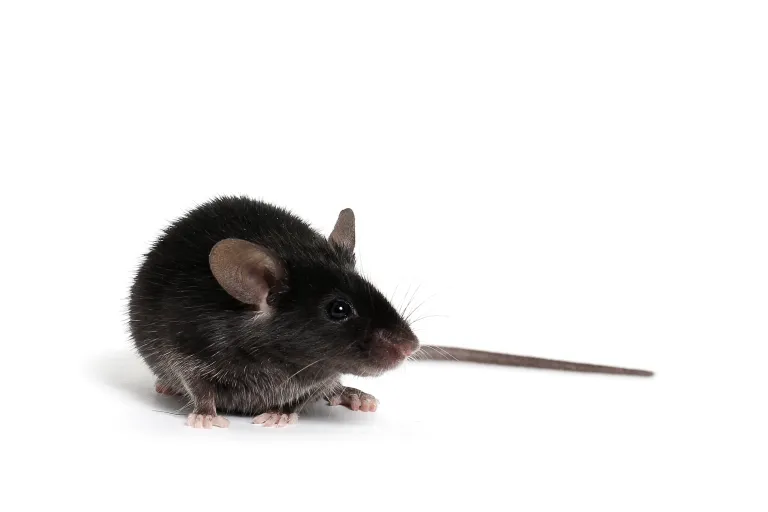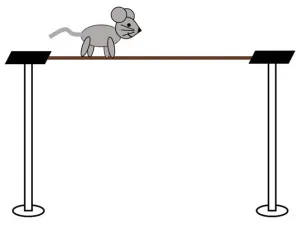When you think of a balance beam, you might think of gymnastics. For humans, a balance beam is a surface where we perform jumps, flips, and other athletic feats. Whether it’s a child taking their first class, or an Olympic athlete going for gold, the balance beam requires both balance and coordination. When a scientist puts a mouse through the balance beam test, they don’t ask them to do this kind of complicated routine, but they are testing those same abilities.

The equipment setup for the balance beam test is simple: two platforms with a beam running between them plus lots of padding underneath so the mouse doesn’t get hurt if it falls off. Over multiple days, the scientist will train the mouse to run across the beam from one platform to another. Once the mouse has been trained, it will go through multiple official test runs. In these tests, the scientist will measure the time it takes for the mouse to cross the beam. They will also count the number of times one of its paws slips off the beam during the crossing. You can see some videos of mice doing the test here.
Mice that have problems with balance and coordination usually take longer to cross the balance beam and have more paw slips during the crossing. The mice might take longer to cross because they are clinging to the beam to try to stay on. Their paws might slip more because they cannot coordinate their movements properly. The scientist can also compare the measurements from the first day of training with the measures taken during the official runs. This shows how well the mouse learned to stay on the beam. This is useful because learning how to do a task and performing the task are two different things. Some parts of the brain are more important for learning, while others are more important for doing the task. Thus, telling those two aspects apart can be useful.

A typical balance beam setup, with two platforms and a beam between them. Image by Amy Smith-Dijak.
The balance beam test has been used to understand balance and coordination in both healthy mice and mouse models of disease. In healthy mice, scientists studying the basic biology of balance and coordination use this assay to test if changing the way particular parts of the brain work changes the mouse’s performance. For diseases in which lack of balance and coordination are major features, such as spinocerebellar ataxias, this test is a simple way to check how fast the disease progresses in mouse models. The assay can further be used to test possible treatments for these diseases: better scores after the treatment indicate that the therapy helped the mice improve their balance and coordination.
To sum it up, the balance beam test is a simple and effective assay to measure a mouse’s balance and coordination. Its use helps scientists to understand the basic biology of balance and coordination, as well as uncover why they are impaired in some diseases. Using the balance beam test on mouse models of disease that underwent different treatments, scientists can further measure if the therapy would improve the mouse’s balance and coordination. Therefore, the balance beam test might even help to find new treatments for motor coordination diseases.
If you would like to learn more about the balance beam test, take a look at these resources by the Maze Engineers and Creative Biolabs.
Snapshot written by Dr. Amy Smith-Dijak and edited by Dr.Larissa Nitschke.









